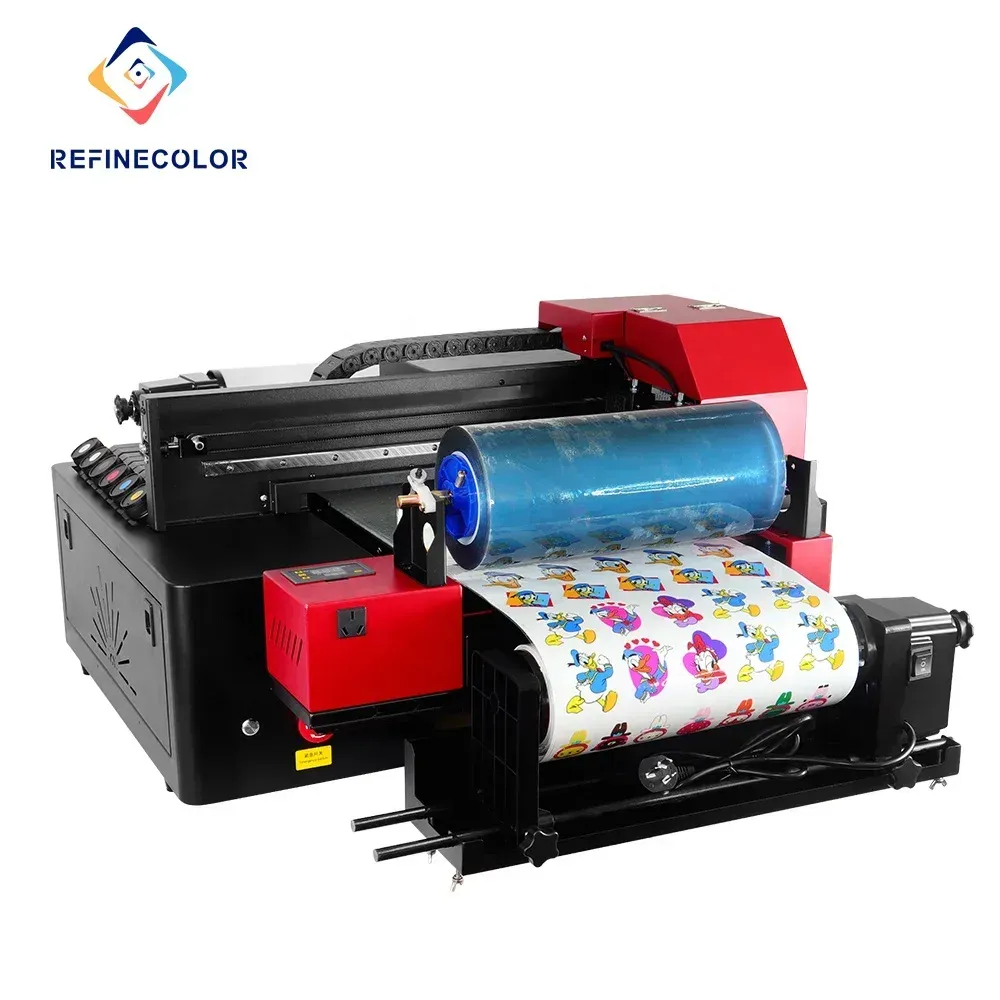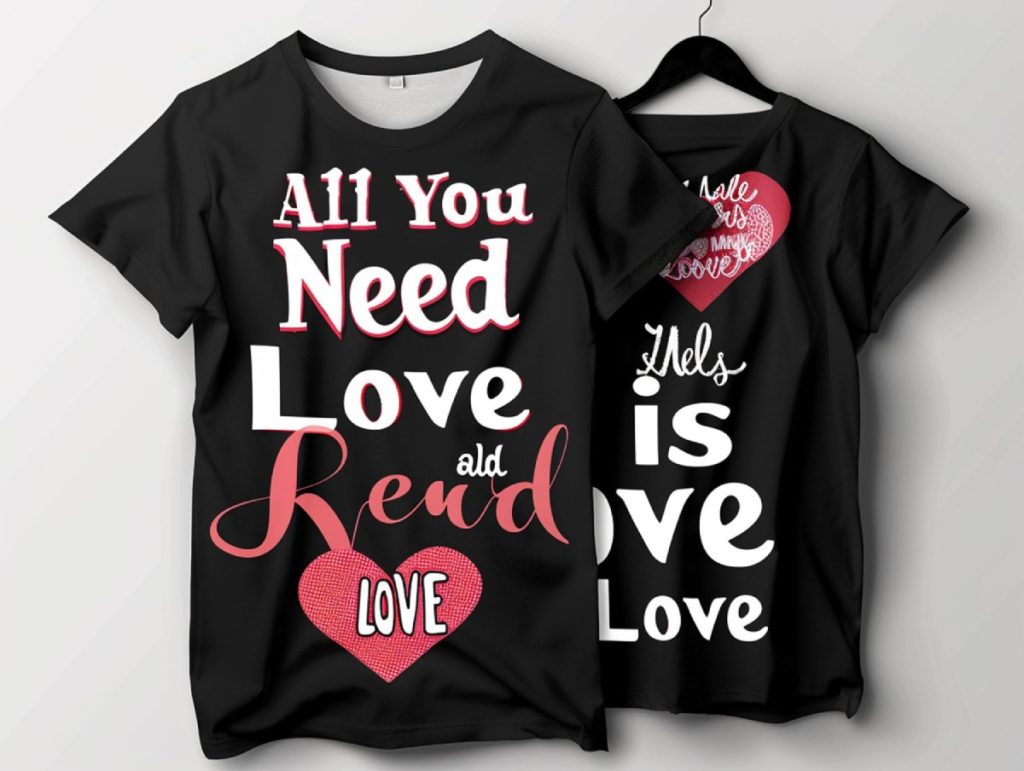UV DTF, or UV Direct to Film printing, is rapidly revolutionizing the fabric printing landscape with its cutting-edge technology. This innovative printing method not only meets the growing demand for high-resolution images and rich colors, but it also emphasizes sustainable practices in an industry often criticized for its environmental impact. The benefits of UV DTF are numerous, including its impressive durability and cost-efficiency, appealing to manufacturers and designers who strive for excellence in their products. As we delve deeper into the features and advantages of UV DTF printing, it becomes evident that this technique is not just a trend but a crucial step toward the future of fabric printing technology. Join us as we explore the exciting prospects that UV DTF offers to transform the way we design and print on fabric.
Emerging as a leader in contemporary textile decoration, UV Direct to Film printing has sparked a notable evolution in the realm of fabric printing technology. This process, which merges the efficiency of direct film technology with the advanced capabilities of UV printing, is paving the way for sustainable fabric printing solutions. With its unique approach, manufacturers can achieve vibrant and high-quality outputs that stand the test of time, making it a game-changer for businesses looking to optimize their production. The growth of UV DTF reflects a broader trend towards eco-friendly practices and the increasing need for durable printing solutions. As the industry continues to embrace these advancements, understanding the nuances of this innovative printing technique will be essential for anyone involved in textile production.
Understanding the Mechanisms Behind UV DTF Printing
UV DTF printing operates on a sophisticated mechanism that marries the principles of UV printing and Direct to Film technology. To break it down, the process begins with an image being printed onto a special film using UV-cured inks. These inks are unique because they undergo a curing process that solidifies them instantly when exposed to ultraviolet light, thus forming a durable layer. This high-quality film is then applied to the fabric using heat and pressure, ensuring that the ink adheres tightly to the surface.
What makes UV DTF particularly innovative is its ability to produce detailed designs on a variety of surfaces, including fabrics with different textures and colors. This versatility means that companies can cater to a wide array of markets, from fashion to promotional items. The consistent print quality achieved through UV DTF further enhances its appeal, presenting a robust option for businesses aiming to deliver superior products.
The Environmental Impact of UV DTF Printing
In an era where sustainability is paramount, UV DTF printing stands out as an environmentally friendly option for fabric printing. One of the main environmental advantages of UV DTF lies in the reduction of volatile organic compounds (VOCs) emitted during the printing process. Traditional printing methods often rely on inks that contain high levels of VOCs, which contribute to air pollution and can negatively impact the health of workers and consumers. In contrast, UV DTF inks are safer and have a lower ecological footprint, making them a more suitable choice for environmentally-conscious brands.
Furthermore, the energy efficiency associated with the UV curing process, as well as the minimal waste of materials during production, further positions UV DTF as a frontrunner in sustainable fabric printing technologies. Brands that incorporate UV DTF into their operations not only help in reducing their environmental impact but also appeal to an increasingly eco-aware consumer base, aligning their practices with the demand for sustainable products.
Advantages of UV DTF Over Traditional Fabric Printing
When comparing UV DTF to traditional fabric printing techniques, the advantages become apparent. One of the standing benefits of UV DTF is the ability to produce high-quality prints that offer exceptional durability and resistance to fading. While screen printing and vinyl transfers can result in vibrant designs, they often suffer from wear and tear over time, leading to significant color loss. UV DTF inks, cured with UV light, form a strong bond with the fabric, ensuring prints last longer without compromising on quality.
Additionally, UV DTF offers a more efficient production process. It reduces the time and cost involved in setup compared to traditional methods that may require extensive preparation. Businesses can produce smaller runs without incurring substantial costs, allowing for greater flexibility in fulfilling customer orders. This adaptability not only caters to custom requests but helps businesses remain competitive in a rapidly changing market.
Exploring the Cost-Effectiveness of UV DTF Printing
Cost efficiency is an essential consideration in the fabric printing industry, and UV DTF printing paves the way for significant savings. The initial investment in UV DTF technology may be substantial, but the long-term benefits far outweigh the costs. With lower printing and setup time, print shops can speed up production and reduce labor costs, which is especially advantageous for smaller businesses with limited resources.
Moreover, UV DTF printing often results in less material wastage, as the process allows for better precision and control over the amount of ink used. This efficiency not only translates into lower expenses for businesses but also aligns with sustainable practices that customers are increasingly seeking. Adopting UV DTF technology can lead to heightened profitability while presenting a brand as innovative and responsible.
The Role of Trade Shows in Promoting UV DTF Technology
Trade shows play an instrumental role in the growth and promotion of UV DTF technology. Events like the PRINTING United Expo provide a platform for manufacturers and innovators to showcase the latest advancements in UV DTF printing. By demonstrating the capabilities of new printers and inks, trade shows help accelerate the acceptance of UV DTF within the industry and spark interest among potential clients, leading to increased market adoption.
Furthermore, these events serve as vital networking opportunities, enabling designers, manufacturers, and suppliers to connect and share insights about emerging trends in fabric printing technology. In essence, trade shows not only highlight the potential of UV DTF but also foster a community focused on innovation, making them crucial for professionals looking to stay ahead in the fabric printing sector.
The Future of UV DTF and Its Implications for the Industry
As we look toward the future, the UV DTF printing technology is poised to revolutionize the fabric printing landscape. Experts anticipate that ongoing research and development will lead to advancements in ink formulations, resulting in a broader range of colors and finishes. This evolution will expand the capabilities of UV DTF printers, providing even more options for designers and manufacturers to work with, thus enhancing the diversity of products available in the market.
In addition, as businesses increasingly shift towards sustainable and eco-friendly practices, the demand for UV DTF technology is likely to grow. This method’s inherent characteristics of durability, cost-effectiveness, and low environmental impact make it a suitable choice for companies aiming to meet both consumer expectations and regulatory requirements. The future of UV DTF appears bright, with the potential to solidify its status as a mainstay in the fabric printing industry.
Frequently Asked Questions
What is UV DTF printing and how does it work?
UV DTF printing stands for UV Direct to Film printing, which combines UV printing technology with the Direct to Film method. It uses UV-cured inks applied through a film transfer process, allowing for vibrant and durable designs suitable for various fabrics.
What are the benefits of UV DTF compared to traditional fabric printing technologies?
The benefits of UV DTF over traditional fabric printing methods include higher print quality with sharper images, greater durability that resists fading and cracking, an environmentally friendly profile with lower VOC emissions, and cost-efficiency due to reduced setup times and faster production.
Is UV DTF sustainable and environmentally friendly?
Yes, UV DTF is considered sustainable fabric printing technology as it utilizes UV inks that have fewer volatile organic compounds (VOCs) and generate less waste compared to conventional printing methods, making it a safer choice for the environment.
How does the durability of UV DTF prints compare to other printing methods?
The durability of UV DTF prints is superior compared to other printing methods. UV-cured inks bond more effectively with fabric surfaces, resulting in prints that are resistant to wear and tear, fading, and cracking, which is especially beneficial for high-use items like sportswear and uniforms.
What does the future hold for UV DTF in the fabric printing industry?
The future of UV DTF looks promising as continuous innovations are expected in ink technology, leading to more color choices, improved adhesion, and enhanced environmental impacts, solidifying UV DTF’s position as a key player in sustainable fabric printing.
How can businesses benefit from adopting UV DTF technology?
Businesses can benefit from adopting UV DTF technology through its high-quality, durable prints, cost efficiencies due to quicker production times, and alignment with sustainable practices, catering to consumers’ increasing demand for eco-friendly products.
| Key Aspect | Description |
|---|---|
| What is UV DTF? | A combination of UV printing and Direct to Film (DTF) technology for vibrant, durable fabric prints. |
| Benefits | Includes high-quality prints, durability, eco-friendliness, cost efficiency, and market adoption. |
| High-Quality Prints | UV-cured inks produce sharper images and vibrant colors that enhance product appeal. |
| Durability | Prints resist fading, cracking, and peeling, ensuring long-lasting quality for frequently used items. |
| Environmentally Friendly | Lower VOC emissions make UV DTF a safer choice, aligning with sustainability trends. |
| Cost-Efficiency | Reduced setup costs and quick production turnaround benefit small businesses. |
| Market Adoption | Growing investments and industry support are driving broader use of UV DTF technology. |
| Future Outlook | Innovations in ink technology will likely enhance color options, adhesion, and sustainability. |
Summary
UV DTF printing is revolutionizing the fabric printing industry by merging cutting-edge technology with an eco-conscious approach. As this innovative printing method gains traction, brands that adopt UV DTF will benefit from high-quality, vibrant prints that are also durable and environmentally friendly. The ability to produce intricate designs quickly and cost-effectively prepares businesses for a competitive edge in an ever-evolving market. Understanding the potential of UV DTF is crucial for those looking to excel in the future of textile printing.



